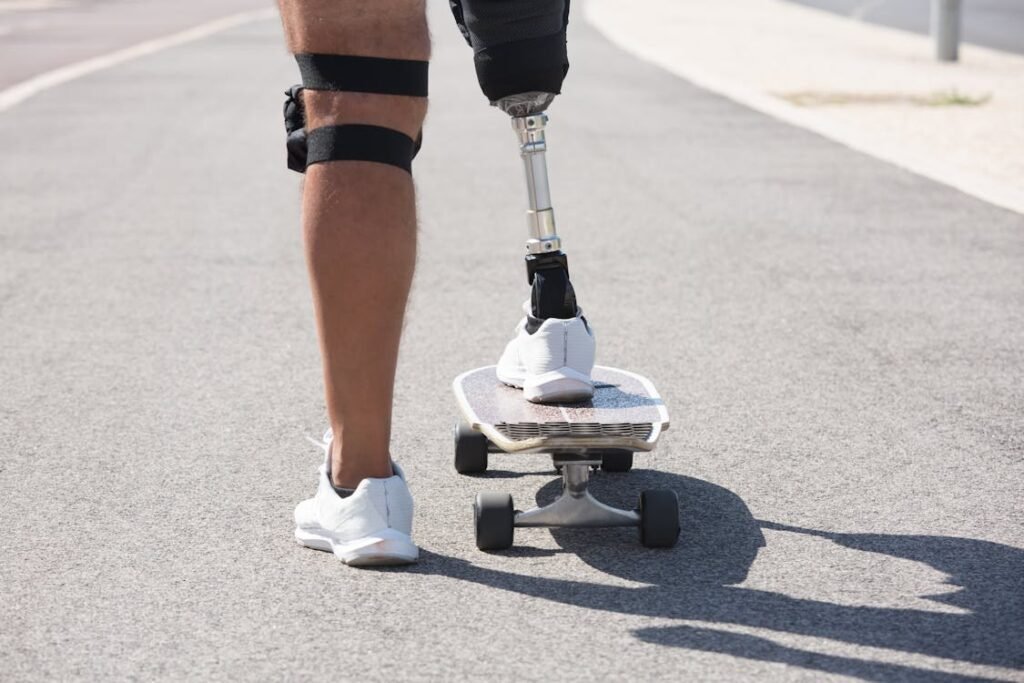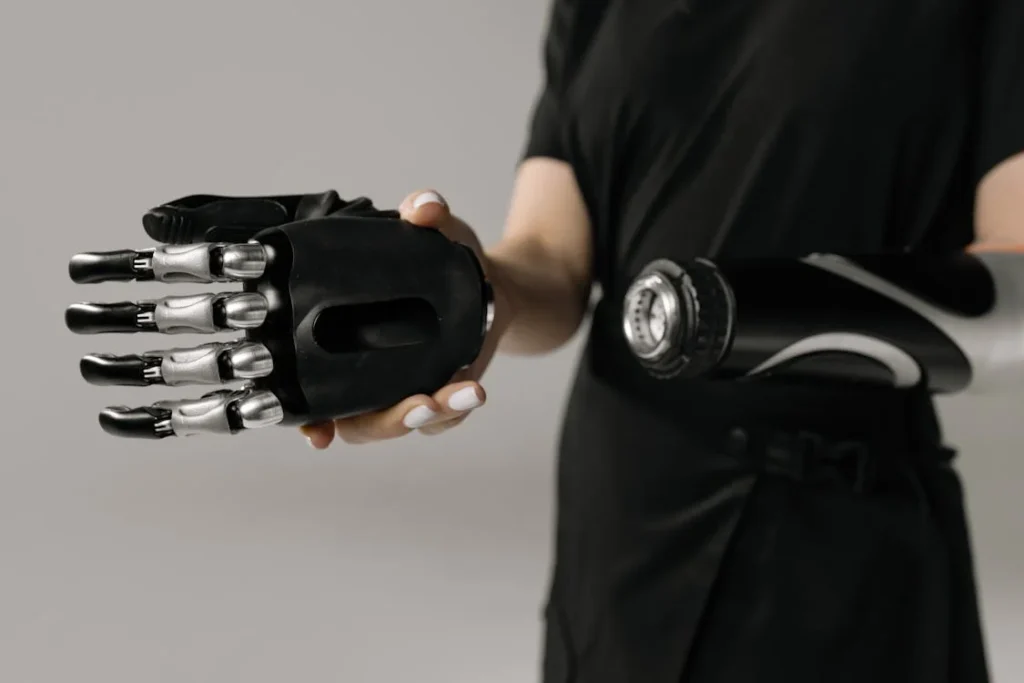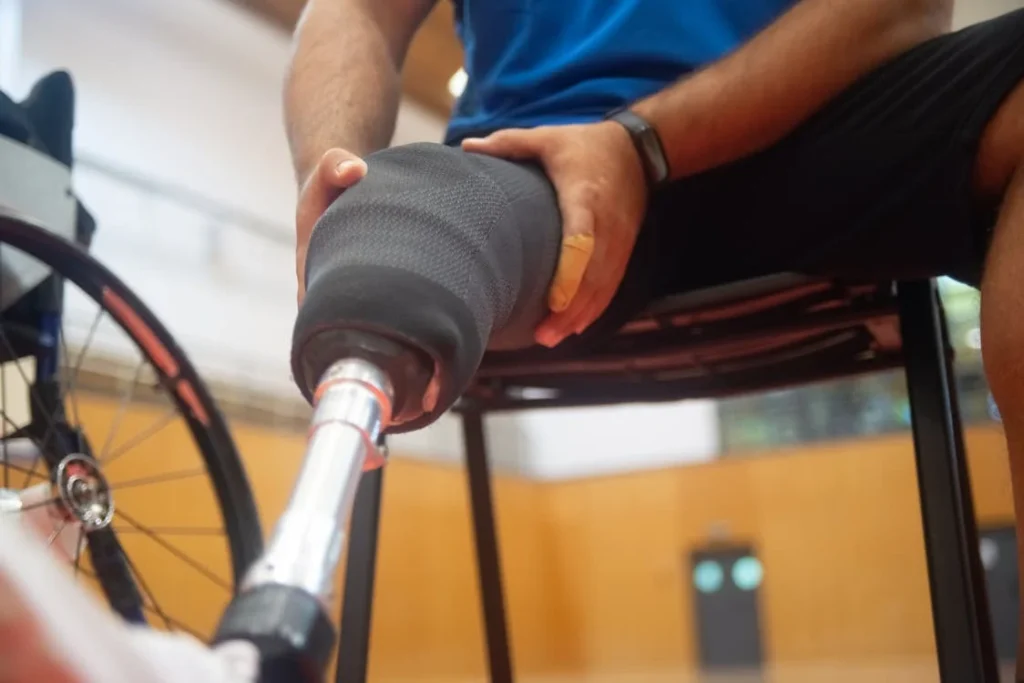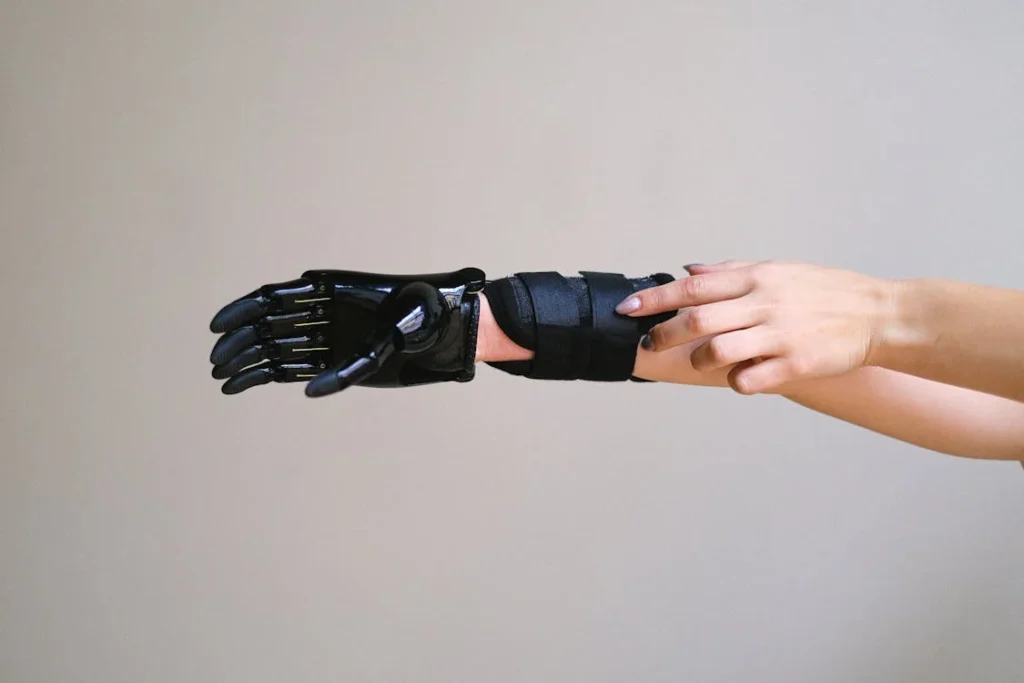A prosthetic limb is an essential part of daily life for many users, providing mobility, independence, and confidence. However, there are times when your prosthetic may not be in use—whether it’s overnight, during a short break, or for an extended period. Proper storage during these times is crucial to maintaining the device’s functionality, comfort, and longevity. Neglecting this step can lead to unnecessary wear, damage, or hygiene issues, which can interfere with your prosthetic’s performance when you need it most.
In this article, we’ll explore the best practices for safely storing your prosthetic limb. From choosing the right environment to handling each component with care, these tips will ensure your device stays in excellent condition, ready to support you whenever you need it.

Why Proper Storage Matters
Proper storage of your prosthetic limb is more than just finding a safe spot to place it—it’s about preserving its integrity and ensuring it functions optimally over time.
Prosthetics are made up of different materials and components, each of which requires careful handling. Incorrect storage can lead to damage, such as warped parts, rusted metal, or degraded liners, which may compromise the device’s fit and functionality.
Additionally, regular exposure to dust, moisture, or extreme temperatures can accelerate wear and tear. By following the right storage practices, you protect your investment and minimize the need for repairs or replacements.
Preserving Material Integrity
Prosthetic limbs are constructed from a combination of materials, such as lightweight metals, durable plastics, and soft liners, each serving a specific purpose.
Improper storage can compromise these materials over time. For example, leaving a prosthetic in a damp environment can lead to rust or corrosion on metal components, weakening their strength and reliability.
Similarly, exposure to heat or direct sunlight can warp plastic parts or cause adhesives to break down, affecting the structural stability of the device.
Storing your prosthetic in a clean, dry environment ensures that each material retains its integrity, allowing the device to continue functioning as intended. By protecting the materials, you minimize the risk of sudden failures and extend the lifespan of your prosthetic.
Ensuring Hygiene and Skin Health
Your prosthetic comes into direct contact with your skin, making hygiene a critical factor in its care. Improper storage can lead to the accumulation of dirt, dust, or bacteria on the surface of the device, particularly on liners or straps.
When the prosthetic is used again, these contaminants can transfer to your skin, causing irritation, rashes, or infections.
Proper storage practices, such as cleaning the prosthetic before putting it away and using a dust-proof cover, help maintain hygiene. This protects not only the device but also your skin, ensuring that your prosthetic remains a safe and comfortable part of your daily routine.
Preventing Component Damage
Prosthetic limbs are designed to endure significant use, but improper storage can subject them to unnecessary strain or damage.
For example, placing the prosthetic in an awkward position or resting it on uneven surfaces can put pressure on joints, hinges, or connectors. Over time, this stress can lead to misalignments, reduced functionality, or even breakage.
Using a dedicated storage space that supports the prosthetic in a natural position reduces the risk of these issues. Ensuring that all moving parts are in their neutral position before storage prevents unnecessary tension, preserving the smooth operation of the device.
Protecting Advanced Technology
Modern prosthetics, especially bionic models like Grippy™, include sophisticated electronics and sensors that require special care.
Improper storage can expose these sensitive components to dust, moisture, or extreme temperatures, which can impair their performance. For example, moisture can corrode internal circuits, while high temperatures may affect the responsiveness of sensors.
Storing the prosthetic in a controlled environment and following manufacturer guidelines for handling electronic components ensures that these advanced features remain reliable.
By protecting the technology within the prosthetic, you preserve its ability to support your mobility effectively.
Minimizing Maintenance Needs
Prosthetics that are stored improperly are more likely to develop issues that require professional repairs or adjustments. Accumulated dust can clog mechanical parts, while exposure to fluctuating temperatures can lead to cracks or weakened adhesives.
These issues not only compromise the device’s functionality but also increase the frequency and cost of maintenance.
Proper storage reduces the likelihood of such problems, allowing the prosthetic to remain in good condition between uses. This proactive approach saves time and money by minimizing the need for repairs and extending the intervals between professional servicing.
Supporting Long-Term Performance
A prosthetic limb is an investment in your independence, and proper storage is an essential part of protecting that investment. When stored correctly, a prosthetic remains ready to use, maintaining its fit, functionality, and durability over time.
This ensures that you can rely on your device without interruptions, allowing you to focus on your daily activities and goals.
Proper storage is not just about keeping your prosthetic safe; it’s about empowering you to live confidently and comfortably. By taking the time to store your device thoughtfully, you can ensure it continues to serve as a reliable partner in your journey.
Choosing the Right Environment
The environment where you store your prosthetic limb plays a crucial role in preserving its quality, functionality, and longevity.
A well-chosen storage space protects your device from physical damage, environmental hazards, and hygiene issues, ensuring it remains ready to use whenever you need it.
By understanding the specific needs of your prosthetic and how external factors affect its components, you can create the ideal conditions for safe storage.
The Impact of Temperature on Prosthetics
Temperature fluctuations can significantly affect the materials used in prosthetics. Excessive heat can warp plastic components, weaken adhesives, or cause electronic parts to overheat in bionic prosthetics.
Cold temperatures, on the other hand, can make certain materials brittle, increasing the likelihood of cracks or fractures.
To avoid these issues, it’s essential to store your prosthetic in a temperature-controlled environment. Spaces like bedrooms or living areas are usually ideal, as they maintain a stable temperature.
Avoid storing the device in areas prone to extreme heat or cold, such as attics, garages, or cars, especially during the summer or winter months.
Managing Humidity for Long-Term Safety
Humidity is another environmental factor that can have a profound impact on prosthetics, particularly those with metal or fabric components.
High humidity levels can lead to rust and corrosion on metal joints or hinges, while damp conditions can encourage the growth of mold or mildew on liners and straps.
To minimize the effects of humidity, store your prosthetic in a dry area with good ventilation. If you live in a particularly humid climate, consider using a dehumidifier or placing silica gel packets in the storage area to absorb excess moisture.
This simple precaution can go a long way in preventing damage and maintaining the hygiene of your prosthetic.
Protecting Against Dust and Debris
Dust and debris can accumulate on your prosthetic over time, particularly if it’s stored in an open or cluttered space. These particles can work their way into joints, sensors, or mechanical parts, potentially causing stiffness or reduced functionality.
For bionic prosthetics, dust can interfere with electronic components, leading to malfunctions or reduced responsiveness.
To prevent these issues, choose a clean, enclosed storage space for your prosthetic. A dedicated cabinet, shelf, or storage box with a dust-proof cover is an excellent option.
If you prefer to store your device in a more open area, consider covering it with a clean cloth to shield it from airborne particles.
Ensuring Accessibility and Safety
While protecting your prosthetic from environmental hazards is important, the storage space must also be practical and accessible. A location that is too difficult to reach may increase the risk of accidental drops or improper handling when retrieving the device.
Select a storage area that is easy to access and allows you to handle the prosthetic with care. For example, a waist-high shelf or a dedicated stand ensures the device can be safely lifted without bending or overreaching.
If you have children or pets, choose a secure location that prevents accidental tampering or damage.
Minimizing Vibrations and Impacts
Prosthetic limbs, particularly those with mechanical or bionic components, are sensitive to vibrations or sudden impacts. Storing the device in an area prone to frequent movement, such as near heavy machinery or on an unstable surface, can cause unnecessary wear and tear.
To avoid this, place your prosthetic on a stable, cushioned surface. A padded stand or storage mat can absorb minor vibrations and provide additional protection. Avoid storing the device near high-traffic areas where it may be accidentally bumped or knocked over.
Creating a Dedicated Storage Zone
A dedicated storage zone for your prosthetic is an effective way to ensure it remains safe and organized. This space should be exclusively reserved for your prosthetic and any related accessories, such as liners, straps, or cleaning supplies.
Keeping everything in one place not only protects the device but also makes it easier to maintain and use.
A dedicated storage zone can be as simple as a drawer or as elaborate as a custom cabinet with compartments for each component. The key is to keep the area clean, dry, and free of clutter, ensuring your prosthetic is always stored in the best possible conditions.

Cleaning Before Storage
Before putting your prosthetic away, it’s important to clean it thoroughly. Residual sweat, dirt, or oils from your skin can build up over time, leading to unpleasant odors or material degradation. Cleaning your prosthetic ensures it stays hygienic and ready for use.
Wiping Down Components
Use a damp, lint-free cloth to wipe down non-electronic parts, removing any visible dirt or grime. For bionic prosthetics, avoid using water near sensors or electronic components. Instead, gently clean these areas with a dry cloth or as per the manufacturer’s instructions.
Caring for Liners and Straps
Liners and straps are in direct contact with your skin, making them prone to sweat and bacteria buildup. Remove these components and wash them with mild soap and water, then allow them to air-dry completely before reattaching them to the prosthetic.
Storing liners or straps while they’re still damp can lead to mold or mildew, which may compromise their durability and comfort.
Pro Tip: Set a regular cleaning routine for your prosthetic, especially before storing it for extended periods. Cleanliness not only preserves the device but also protects your skin from potential irritation.

Protecting Your Prosthetic During Storage
Once your prosthetic is clean, you’ll need to take additional steps to ensure it remains safe during storage. Prosthetics should be stored in a way that prevents accidental damage or unnecessary strain on components.
Using a Dedicated Storage Space
Having a designated storage space for your prosthetic is a simple but effective way to keep it safe. A storage cabinet, shelf, or stand specifically for your device ensures it’s kept away from potential hazards, such as falling objects or being stepped on.
Make sure the space is clean and free of clutter to reduce the risk of accidental damage.
Positioning the Prosthetic
When storing your prosthetic, avoid placing it in positions that could strain its components. For example, resting the prosthetic in an awkward angle can put pressure on joints, straps, or connectors, potentially causing warping or misalignment.
Instead, lay the prosthetic flat on a soft, supportive surface or use a prosthetic stand designed to hold it in a natural position.
Securing Moving Parts
Many prosthetics, particularly those with mechanical or bionic components, include moving parts such as hinges, joints, or rotating mechanisms.
Before storing your prosthetic, check that these parts are in their neutral position to avoid unnecessary strain. Leaving a joint partially bent or a hinge locked in place for extended periods can create tension that may weaken the component over time.
For bionic prosthetics, ensure that motors or actuators are turned off, and, if applicable, disconnect batteries to prevent unnecessary power drain or overheating during storage.

Long-Term Storage Tips
If you’re planning to store your prosthetic for an extended period, additional precautions are necessary to ensure its condition remains intact. Long-term storage requires more attention to factors like material preservation and environmental stability.
Removing Removable Components
Disassemble removable parts, such as liners, straps, or batteries, before placing the prosthetic into long-term storage. These components often degrade faster than the main structure and are better preserved when stored separately.
Store each part in a clean, dry bag or container, and label them for easy reassembly when needed.
Protecting Against Dust and Moisture
Dust and moisture are among the biggest threats to prosthetics in long-term storage. Use a protective covering, such as a soft cloth or a dust-proof storage bag, to shield your prosthetic from dirt and humidity.
Avoid using airtight plastic bags, as they can trap moisture and encourage mold growth.
Including a silica gel packet or another moisture-absorbing material in the storage area can help maintain a dry environment, especially in humid climates.
Periodic Check-Ups
Even when your prosthetic is not in use, it’s important to check on it periodically to ensure it remains in good condition. Inspect the device for signs of dust, corrosion, or other issues.
If you notice any changes, clean the prosthetic and adjust the storage environment as needed to address the problem.

Special Considerations for Bionic Prosthetics
Bionic prosthetics, such as Grippy™, often come with advanced features that require specific care during storage. These devices contain electronic components that are sensitive to environmental factors and need proper handling to ensure their longevity.
Battery Care
Batteries are a critical component of bionic prosthetics, and improper storage can lead to reduced performance or permanent damage. If you’re not using your prosthetic for a while, remove the batteries and store them separately in a cool, dry place.
Ensure the battery terminals are clean and free from corrosion before storage.
For devices with built-in rechargeable batteries, charge them to around 50–70% before storage. Avoid storing batteries at full charge or completely drained, as this can reduce their overall lifespan.
Protecting Sensors and Electronics
Bionic prosthetics are equipped with sensors, motors, and delicate circuitry that require extra care. Store the device in a position where these components are not exposed to dust, impacts, or moisture.
Use a storage case or box designed to provide additional protection, especially if the prosthetic includes exposed wiring or ports.
Tips for Traveling with a Prosthetic
Sometimes, storage isn’t about leaving your prosthetic behind but ensuring it’s safely transported during travel. Whether you’re going on a short trip or a long journey, proper storage and packing techniques are essential to protect your device on the move.
Packing the Prosthetic
Use a padded case or bag specifically designed for prosthetics to minimize the risk of damage during travel. Secure the prosthetic in a position that prevents it from shifting, and pack soft materials around it to cushion any impacts.
If traveling by air, carry your prosthetic as part of your hand luggage whenever possible. This ensures it remains under your supervision and reduces the likelihood of mishandling by baggage handlers.
Planning for Accessibility
If you need to store your prosthetic temporarily during travel, such as while visiting a pool or beach, ensure you have a safe, clean space to place it. A portable storage bag with moisture-resistant features can help protect the device in these environments.

Common Mistakes to Avoid
Storing a prosthetic limb may seem straightforward, but even small oversights can have long-term consequences for its performance, durability, and hygiene.
Avoiding common mistakes ensures that your prosthetic stays in excellent condition, saving you time and money on repairs while maintaining your mobility and comfort. Understanding these pitfalls allows you to take proactive steps to protect your investment.
Neglecting Regular Cleaning Before Storage
One of the most frequent mistakes users make is failing to clean their prosthetic before putting it into storage. Residual sweat, oils, and dirt can accumulate on the device during daily use, especially on liners, straps, and sockets.
When left uncleaned, these residues can lead to unpleasant odors, material degradation, or even bacterial growth.
Skipping this step is particularly problematic when storing a prosthetic for an extended period. Over time, contaminants can become harder to remove, and their effects on the device’s materials may become irreversible.
Cleaning your prosthetic thoroughly before every storage session, even for short durations, is essential to maintaining hygiene and preserving its components.
Using Improper Storage Locations
Another common mistake is choosing an unsuitable storage location. Storing a prosthetic in places like basements, garages, or outdoor sheds exposes it to extreme environmental conditions, such as high humidity, temperature fluctuations, and dust.
These areas can cause rapid material wear and affect the device’s functionality.
Additionally, some users store their prosthetics in high-traffic areas where they can be accidentally bumped or knocked over, leading to physical damage. Avoiding these locations and opting for a controlled, low-risk environment is key to ensuring your prosthetic’s safety.
Failing to Secure the Prosthetic Properly
Improper positioning during storage is a mistake that can lead to unnecessary strain on the prosthetic’s components.
For example, resting a lower-limb prosthetic in a way that puts pressure on its joints or connectors can cause misalignments or weaken structural integrity. Similarly, leaving a bionic prosthetic with its motors engaged or sensors exposed can result in avoidable wear or damage.
Ensuring the prosthetic is stored in a neutral position, with no tension on its parts, helps maintain its alignment and functionality. Specialized stands or soft, supportive surfaces can provide the necessary stability and protection.
Overlooking the Importance of Climate Control
Many users underestimate the impact of climate on their prosthetics, assuming that minor temperature or humidity changes won’t cause significant harm.
However, prolonged exposure to moisture can lead to corrosion, while excessive heat can warp plastic components or damage adhesives.
Storing a prosthetic in an environment with stable temperature and low humidity is essential. Ignoring this consideration can lead to cumulative damage that affects the device’s performance over time, even if the issues aren’t immediately noticeable.
Ignoring Long-Term Storage Precautions
When storing a prosthetic for an extended period, failing to take additional precautions can result in significant deterioration.
For example, leaving liners or straps attached to the device during long-term storage can trap moisture or create pressure points, causing material degradation.
Similarly, failing to periodically check on the prosthetic can allow small issues, such as dust accumulation or rust, to go unnoticed and worsen.
Long-term storage requires a more detailed approach, including disassembling removable parts, using protective covers, and inspecting the prosthetic regularly to ensure it remains in good condition.
Not Following Manufacturer Guidelines
Each prosthetic is designed with specific materials and features that may require tailored care. Ignoring the manufacturer’s recommendations for storage and maintenance is a common mistake that can lead to unintended damage.
For instance, using the wrong cleaning products or neglecting to remove batteries from a bionic prosthetic during storage can cause irreversible harm.
Always refer to the manufacturer’s guidelines for proper storage practices, as these are designed to protect the unique features of your prosthetic. If you’re unsure about any aspect of care, consult your prosthetist or the manufacturer for clarification.
Underestimating the Role of Organization
Storing a prosthetic haphazardly or mixing its components with other items can lead to misplaced parts, accidental damage, or confusion when it’s time to use the device again.
For example, losing a liner or strap can delay usage, while storing the prosthetic near heavy objects increases the risk of impact damage.
Creating a dedicated, organized storage space for your prosthetic and its accessories ensures everything is easily accessible and protected. Labeling removable parts and storing cleaning supplies nearby further streamlines the maintenance process.
Conclusion
Properly storing your prosthetic limb when it’s not in use is an essential part of maintaining its performance, durability, and hygiene. By choosing a clean, stable environment, cleaning the device before storage, and protecting it from dust and moisture, you can significantly extend its lifespan and ensure it’s ready to support you whenever you need it.
At Robobionics, we understand the importance of proper prosthetic care. Our expert team is always here to guide you on maintenance and storage, ensuring your prosthetic continues to enhance your mobility and independence. If you have any questions or need personalized advice, don’t hesitate to reach out.
Have questions about caring for your prosthetic? Contact us today for expert tips and support! Learn More



